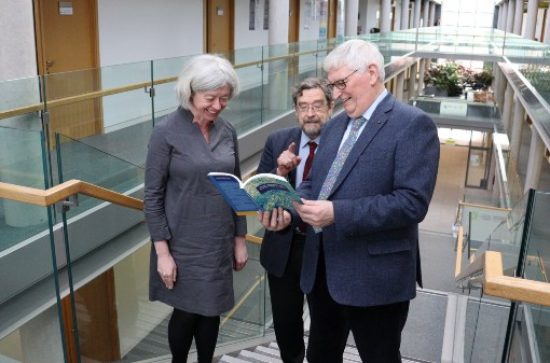
The geographical distributions of household incomes in Ireland are comprehensively examined for the first time in new resarch by Professor Emeritus Jim Walsh of the Department of Geography and Maynooth University Social Sciences Institute.
The resarch outlined by Prof Walsh in his book, Income distribution and Redistribution in Ireland: A Geographical Exploration, shines a light on a critical barometer of the geography of social and economic change in Ireland over recent decades.
Commenting on the implications of the findings, Professor Walsh stated: “The persistence of inter-regional disparities and the further growing apart of metropolitan sub-regions from the most rural areas mirrors trends observed in many other countries. Furthermore, if recent trends are not addressed within a comprehensive, integrated and highly coordinated planning framework they may result in sub-optimal economic performance and, more seriously, pose a threat to social and political cohesion that could frustrate attempts to achieve consensus on how best to tackle the most serious social and environmental challenges in the years ahead.”
The geographical distribution of household incomes documented in this book is an outcome from a particular model of economic development that is no longer sustainable from social, economic, environmental and inter-generational perspectives.
Professor Eeva Leinonen, President of Maynooth University, said: “This book exemplifies the commitment of Maynooth University to researching and promoting a better understanding of the complexities of economic and social transformation in Ireland. More fundamentally, it shows that the income levels and development potentials of households in different places are strongly influenced by the current and historical interactions of international and national influences with the specific conditions that prevail in very diverse localities in our cities, towns and rural areas.”
The main conclusions of the research are: The disparity between median incomes in urban and rural areas has greatly reduced in recent years. In 2019, the median household disposable income in rural Ireland was only 3% less than for urban households, in contrast to a gap of 19% in 2008. However, a large disparity in the median levels of disposable income persists between Dublin and the Border, Southeast and Midland regions. Over most of the last two decades median incomes in the Border region were on average 41% less than in Dublin.
Beyond the five largest cities, there is no statistical relationship between the population size of towns and median household incomes. For example, Maynooth with a 2016 population of 14,585 is very similar to Killarney or Tullamore but it has a median income that is 67% greater than in either town. In fact, Maynooth has the third highest median household gross income after Malahide and Celbridge. Large county towns like Tralee, Carlow, Wexford, Letterkenny and Sligo have much smaller median incomes than might be expected on the basis of their population size. The author concludes that the extent of commuting is a key influence on the variation in incomes between towns.
The micro-geography map of income distribution reveals major contrasts between the extended metropolitan areas and the remainder of the country with localised higher incomes around some of the larger towns. For the first time, it is possible to view the overall pattern of intra-urban and intra-rural diversity in the distributions of both rich and poor households. Professor Walsh concluded that the geographical variation in income levels is linked to two factors: firstly, the spatial structure of the economy and the related employment patterns and other household attributes, and secondly, the role of state transfers via income supports along with the distribution of predominantly public sector employment.
There are significant differences between the geographical distributions of employment in sectors with high earnings and those where the majority of workers have low earnings. The highest median incomes occur in a range of occupations linked to ICT and professional services that are predominantly concentrated in Dublin. Well above average earnings occur in sub-sectors of manufacturing that are particularly highly concentrated in the Cork, Limerick and Waterford metropolitan areas while the education, health and public administration sectors provide a distinctive boost to the median incomes in Galway and other towns in the Northern and Western region.
The lowest incomes are associated with agriculture, wholesale and retail services, hospitality and parts of the construction sector. They account for disproportionately large shares of the total incomes in many small towns and rural areas. Taken together these sectors account for 30.8% of the total earned income in the Northern and Western region in contrast to 25.5% in the Eastern and Midland region. The weakness associated with the market-based sectors is however mitigated to a large extent by the distribution of employment in public services (education, health, security and public administration) which accounts for 34% of all earned income in the Northern and Western region compared to 28% in the Eastern and Midland region. The median incomes of households in these sectors are second highest amongst all sectors.
An extensive range of financial supports are also provided by the State to many households which help to considerably reduce the disparities in disposable incomes compared to gross incomes. The reliance on these transfers is reflected in very distinctive geographical patterns. For example, in Donegal the State pension and / or other social welfare subsidies account for more than 50% of the gross income of almost two-fifths of all households compared to only one-fifth in Kildare.
Jim Walsh is a Professor Emeritus of Geography and a former Vice-President of Maynooth University. He has published extensively on regional development and spatial planning in Ireland.
